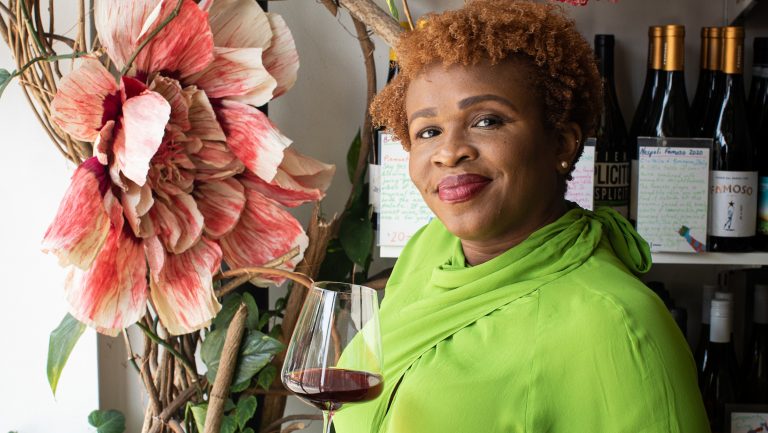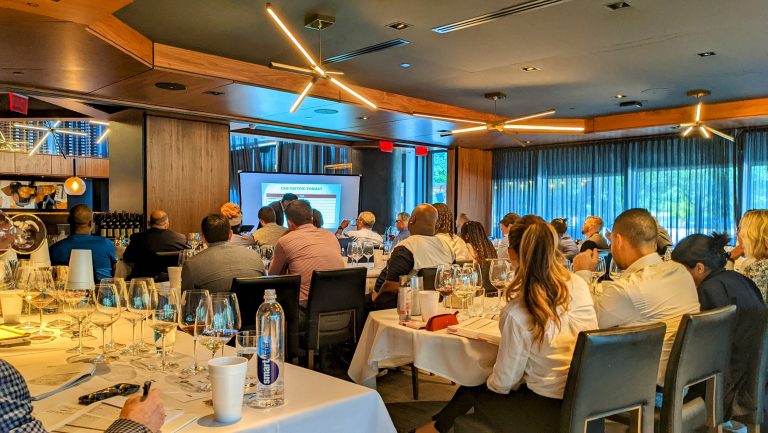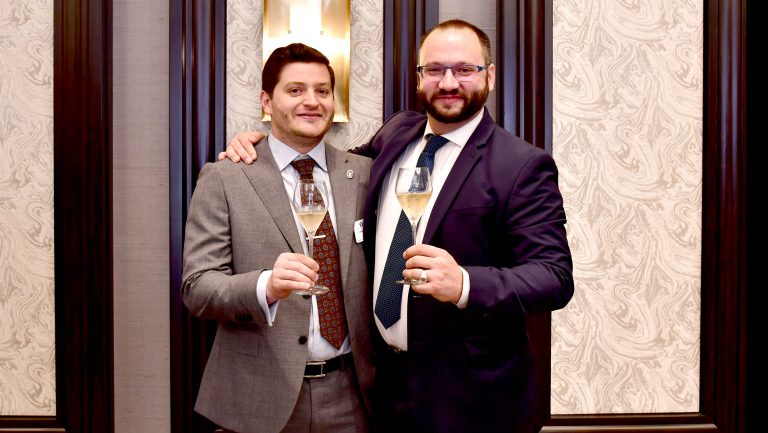Over the past several years, broad cultural movements—#MeToo, Black Lives Matter, the shift to remote work—have impacted the wine industry as much as any other. Within the wine education space specifically, the impacts of these movements have been widespread, spurring change at almost every level—with no signs of slowing down.
“This is where wine education is changing,” explains Mary Gorman-McAdams, MW, an independent consultant, educator, and Bordeaux specialist and the former director of the International Wine Center (IWC) in New York City. “You’re having this migration from it being this elite language that you’re almost born with, to something for people who have never had anything to do with [wine].”
From where to find educational resources to who can access them—and even the importance of formal certifications themselves—the wine education landscape looks significantly different than it did just five years ago. SevenFifty Daily spoke with schools, teachers, students, and organizations to understand what’s changed, what’s working, and where wine education goes from here.

Don’t miss the latest drinks industry news and insights. Sign up for our award-winning newsletters and get insider intel, resources, and trends delivered to your inbox every week.
Fundamental Changes in Wine Education
“Wine education used to be quite formal,” says Gorman-McAdams. “Now, wine education is everything from ‘edu-tainment’ to credentials.” Deniece Bourne, a wine and spirits business development consultant and a Wine and Spirit Education Trust (WSET) certified educator, echoes this sentiment: “Wine education has blown up. It’s become increasingly important over the last five years and not just for the trade, but for the consumer as well.”
The expansion of wine education has been driven in part by changing demand. Industry professionals are looking for a greater range of educational opportunities after scandals shook student confidence in industry strongholds like the Court of Master Sommeliers, Americas (CMSA). At the same time, curious consumers are showing a real interest in both formal and informal wine education; according to information provided by the WSET, consumer enthusiasts now represent approximately 50 percent of all students who take their wine courses.

“In a recession, you’re never sure what will happen with enrollments,” says Adam Chase, the director of Grape Experience Wine and Spirit School in San Francisco. In 2008, enrollments went up “because people were looking for new jobs and they felt they needed credentials to get them to switch to wine. To some extent, that has also been true during COVID.”
To keep pace with demand, new delivery methods have been essential for traditional educational programs like WSET and the formal wine schools that provide them. “We’ve seen a whole change in how wine education is done,” says Chase. “There’s always been the self-study platform that WSET offers, but with the advent of Zoom and other technologies, you can now run a course online and actually get [wine] samples.” The Grape Experience began offering these courses during the pandemic as student demand shifted from away from the classroom.
Some schools are even combining delivery methods. “When we run [WSET] Diploma D1 and D2, we run it as a combination of the WSET’s online classroom and three Zoom classes,” says Chase. The Grape Experience still runs traditional in-person courses, albeit fewer of them. “The student can choose what they want and what’s going to work for them,” he adds.
Now under new leadership, the CMSA in particular is undergoing even more fundamental changes as a result of recent criticism. The organization plans to evolve from an examination body into an organization that supports the profession more broadly through education, mentoring, and credentialing.
“We create opportunities for beverage professionals to advance their careers, and in turn those service professionals elevate the beverage and hospitality experience for everyone,” says Julie Cohen Theobald, the executive director of the CMSA, who joined the organization in 2021. “We have taken significant steps toward inclusivity and transparency over the past several years.”
New Learning Resources
As both professional and curious consumers look for new sources of wine education, a diverse range of resources have sprung up. Mostly started during the pandemic as a way to connect when travel wasn’t an option, Zoom tasting, webinars, and even online conferences have become standard offerings, even as pandemic restrictions have subsided.
“There are so many delivery platforms now, it’s almost like the Wild West,” says Gorman-McAdams. “There are so many people on social media, on YouTube, delivering their version of wine education.” Alternative delivery platforms have become popular because “a lot of [the formal educational platforms] are geared towards that academic approach, and not everyone learns in that way,” says Bourne. Examples range from informal content, such as the YouTube channel run by Master of Wine Konstantin Baum and Bon Appétit’s World of Wine video series lead by sommelier André Mack, to slightly more advanced material, such as Symington Family Estates’ School of Port, which provides a comprehensive online video course about the fortified wine, or Wine Australia’s robust education website that provides guides, maps, and videos about the region.

“The biggest benefit of the development of online sessions is being able to listen to and learn from winemakers from across the world,” says Matthew Gaughan, a WSET-certified educator and current Master of Wine student. “For example, at the beginning of the pandemic, Tyson Stelzer, who writes about Champagne, had live interviews with winemakers whom none of us would have been able to meet without visiting the region—and even if we were able to do so, we still might have not been able to meet them in person.” Before the pandemic, it was extremely difficult to gain access to certain people and information—now it’s becoming a common part of the education landscape.
As technology has advanced, so have the education offerings; online interactions aren’t just accessible around the world, they’re much more comprehensive. “With the improvement of software, not only can we take you and do a fly over [of a wine region], we can zoom in and go street level and all of a sudden you’re there,” says William Davis, the director of education at Wilson Daniels.
For the Bâtonnage Forum, the pandemic resulted in an opportunity to grow their offerings—and their community—through a virtual format called Bâtonnage://Connect. It took place over four weeks in the summer of 2020, featuring 10 sessions with participation from more than 35 speakers and 20 women winemakers and chefs; over 600 people from five countries attended, according to Katie Canfield, a partner at the Bâtonnage Forum. “When the Forum returns, it will likely be a hybrid scenario with in-person and online components,” she says. ”Now that we’ve built this international community, we must continue to cultivate it.”
Expanding Access to Wine Education
With so many new entry points to wine education, access has changed significantly, and many industry professionals agree that broader access to education has been one of the positive results of the COVID-19-induced changes the industry has experienced.
For decades, formal wine education programs were primarily offered in large, metropolitan cities. If a student was not able to commute to a course site, it was difficult to find an alternative method of instruction. “Most people, even in the trade, perceive that each major [wine education] outlet has some barrier to access. For WSET, it’s the cost, if not location. It’s not readily available in every country in the world,” explains Bourne.
Now, that’s changing for many U.S.-based students. Online courses are being offered by schools throughout the country, making it easier for students to access educational resources when one’s location or schedule doesn’t allow for in-person learning. According to data provided by the WSET, the demand for remote learning in the U.S. is strong; students in the Americas have been the quickest to embrace WSET’s online courses, with approximately 30 percent of all level one and two exams taken remotely—more than double the pre-pandemic rate.

Similar changes are taking place at the CMSA. “We are currently enrolling thousands of students from across the world in our online courses, which are accessible in every geography,” says Theobald. “While COVID necessitated the need for hosting programs online, the format is great for accommodating different learning styles.” Despite returning to in-person teaching, the CMSA has retained a strong online roster for its introductory sommelier course and exam. “It’s currently an equal split in preference between in-person and online,” she adds.
“It has leveled the playing field,” says Gorman-McAdams. “Now, there’s much more equal access and that’s a good thing.” Moreover, at many wine schools, including the IWC and Grape Experience, online courses are cheaper than in-person ones, bringing down the cost of entry. “In any major landscape change, there’s always a fallout because there’s a realization that you don’t need to have these kinds of costs. They’re just circumstantial to place or location,” says Gorman-McAdams.
However, it’s the proliferation of informal education programs that has likely provided the greatest increase in access to wine education. Students—both industry professionals and consumers—can now access quality education content for free across many different platforms. “For a long time, wine education has been stale, male, and pale,” says Gorman-McAdams. “Now, you’re drowning in opportunities. You could be listening to an Instagram Live, a webinar. I think one of the challenges is … how do you navigate what is in the tsunami of possibilities.”
The Downsides of Change
While online education options have helped with access from both a cost and location perspective, these delivery methods come with a different set of challenges. “I have to confess, I’m not a big fan,” says Gaughan, referring to Zoom classes. “I can’t imagine being a full-time, everyday teacher having to teach solely through Zoom. Students who take in-person classes have much higher pass rates; it’s impossible to fully replicate the classroom experience where students and educators taste the wines together.”
At the Grape Experience, Chase has found that the online format works better for some courses than others. “It’s great for WSET’s levels one and two, but level three, I think, needs to be combined with some in-person or at least live Zoom to work,” he says. “You can lose sight of the amount of detail you need to learn.”
Formal programs are starting to adapt to changing demand, but there’s still a long way to go. “The student has changed,” says Chase. “They are used to an on-demand world where they can schedule their own things, where data is 24/7. I think the WSET is getting there, but they’re not there. The student is expecting more flexibility.”

For students that chose to pursue alternative education options online, finding reputable sources is essential, but can be difficult to recognize without guidance. “The biggest challenge we’ve seen with social media is the onslaught of misinformation,” says Davis. “For those that are coming into wine education, they may be learning bad information from day one and it could take months or years to unlearn. We have to be extremely careful with the democratization of wine education. There’s a lot of bad information that’s out there.”
Are Certifications Still Important?
With so many diverse resources now available, it begs the questions whether traditional, expensive wine certifications are still necessary. “I don’t think formal certifications are necessary to be successful in the industry,” says Gaughan. “If I were an employer, I would take many other factors into consideration.”
Canfield agrees that certifications don’t necessarily get a student where they want to be in terms of their career. “While wine certifications can be beneficial for wine professionals entering the industry, in most cases it falls short in setting candidates up for success in their respective careers,” says Canfield. “At the end of the day, what most employers are looking for on a CV is experience.”
For Davis, certifications still have an essential role to play. “The reason they are important is because you’re being tested on a baseline. If you’ve done the certification, then that usually means you’ve done the work.”
Even Gaughan admits, “The knowledge of spirits I learned from WSET courses, even though my focus was wine, was vital in building up a substantial collection of spirits and related drinks in [retail] shops and in aiding sales.”
Alisha Blackwell-Calvert, a sommelier at the Cinder House in the Four Seasons Hotel St. Louis in Missouri, recently passed the CMSA’s Advanced Sommelier exam and found the certification to be worthwhile. “Certification has been closely tied to my career goals,” says Blackwell-Calvert. “Each ‘level up’ has offered new opportunities for my career that may not have been possible without taking the initiative to set myself apart.”
Even so, Blackwell-Calvert points out that “many talented wine professionals have become successful without a pin and paper. I suggest envisioning what you want your path to look like when it comes to choosing which educational body to study towards.”
What Still Needs to Change?
Most of the people interviewed for this article feel that progress has been made in terms of the diversity of students and, to a much lesser degree, teachers. However, very few organizations or schools track this information, making it difficult to say how much progress has actually been made.
Tracking diversity data is an essential first step towards measurable change. The WSET is looking into gathering this data, but doesn’t currently track it. The CMSA has recently started gathering diversity data. “Beginning in 2021, we added the option for candidates to share their race and ethnicity in their student profile and as they register for our programs,” says Theobald. Notwithstanding the industry’s perceived progress, many agree that there’s much more work to be done to make the landscape more diverse.

In recent years, the industry has seen a slew of new scholarships focused on helping women and people of color access wine education. While this offers a good starting point, it doesn’t ensure that students of diverse backgrounds continue the path and ultimately end up working in the industry. “There’s a lot more work to encourage and get more people through the WSET program and into the industry to make sure a more diverse group of people is making it through the career path as well,” says Gorman-McAdams.
The road to becoming an educator can be even more difficult, in part because the career path often feels shrouded in mystery. “I still get people asking me ‘how do I become an educator?’” says Bourne. “People just don’t know how to do it, and that’s part of the lack of diversity that you see in the education space. They don’t know how to access it; it’s not readily available knowledge.”
Even fewer accommodations have been made for students with disabilities. Bourne recalls a diversity scholarship recipient who had trouble accessing the course because they had hearing impairment. “When we think about access, we usually default to financial access, access for people of diverse backgrounds, but we don’t always think of physical ability, seeing, hearing,” she says. “Has that access increased? Not so much, because people aren’t thinking about those demographics when they think about access and diversity.”
The world has changed significantly in recent years—and so have wine students. Professional and casual learners alike have a new appetite for learning, and new expectations around access and flexibility. Students want educational materials that suit their individual needs, whether that’s a different delivery method, a non-traditional course topic, or a culturally familiar learning style.
New options are popping up everywhere to meet that demand, offering more diverse learning opportunities and presenting new challenges as students figure out what’s worthwhile and what’s not. In all likelihood, accelerated change will be the new normal going forward—and that’s a good thing, as the world of wine is constantly evolving.

Dispatch
Sign up for our award-winning newsletter
Don’t miss the latest drinks industry news and insights—delivered to your inbox every week.
Caitlin A. Miller is a New York-based wine writer and the current associate editor for SevenFifty Daily. Her work has appeared in Food & Wine, Vinous, and Christie’s International Real Estate Magazine. She holds the WSET Diploma in Wines and was the recipient of the 2020 Vinous Young Wine Writer Fellowship.







